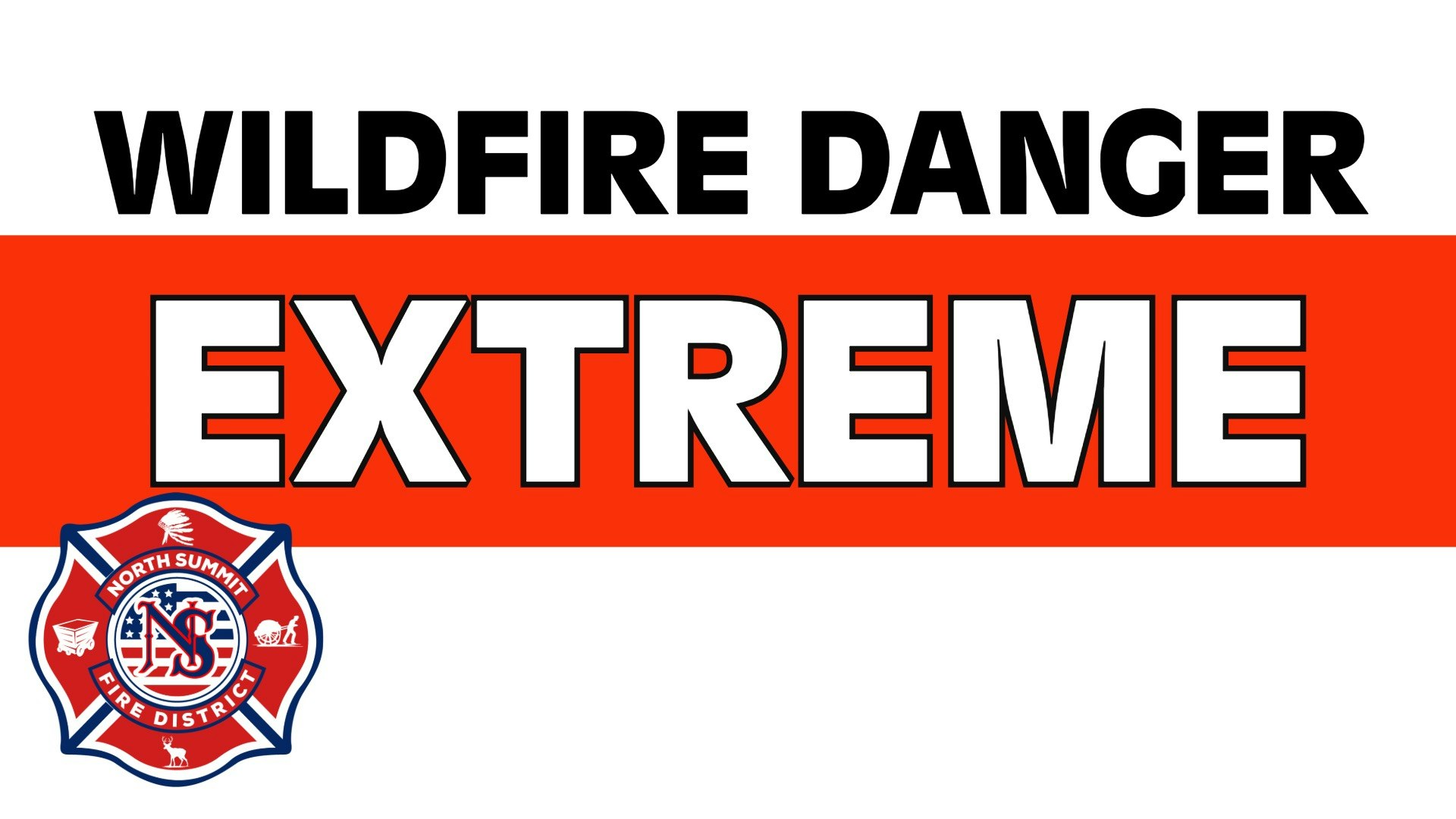EXTREME WILDFIRE DANGER

Understanding Extreme Wildfire Danger
Characteristics of Extreme Danger:
- Fires start quickly from all causes, including unattended campfires, discarded cigarettes, equipment sparks, and even small embers.
- Fires spread rapidly and intensely, often making firefighting efforts difficult or ineffective.
- Fine fuels like dry grass and leaves ignite easily, and larger fuels like trees and logs burn with high intensity.
- Spot fires can occur from wind-carried embers, extending the fire's reach and compounding its spread.
Weather Influences:
- Extremely hot temperatures and very low humidity.
- Strong, gusty winds that can fan flames and carry embers over long distances.
- Prolonged drought conditions, often during peak summer months.
Tips to Avoid Contributing to Wildfire Risk
Around Your Home and Property:
-
Maintain Defensible Space: Create and maintain a buffer zone around your home.
- Clear a 100-foot zone of flammable vegetation and materials.
- Trim trees and shrubs regularly to reduce fuel load.
- Keep grass short and well-watered.
- Use Fire-Resistant Materials: Build or retrofit homes with fire-resistant materials for roofs, walls, and decks.
- Regular Maintenance: Clean roofs and gutters of dead leaves, debris, and pine needles.
During Outdoor Activities:
-
Avoid Campfires: Do not light campfires in high-risk areas.
- If necessary, use designated campfire rings and keep fires small.
- Always keep a bucket of water and shovel nearby to fully extinguish campfires.
- Proper Disposal of Smoking Materials: Use an ashtray for cigarette butts and ensure they are fully extinguished.
- Avoid Using Fireworks: Do not use fireworks in dry or grassy areas.
Safe Equipment Use:
- Check Equipment: Ensure lawnmowers, chainsaws, and off-road vehicles have spark arresters.
- Operate Safely: Avoid using equipment that generates sparks or heat in dry, grassy areas.
Burning Practices:
- Avoid Open Burning: Refrain from burning trash, debris, or fields during extreme wildfire danger.
- Follow Local Regulations: Comply with all burning bans or restrictions.
Vehicle Safety:
- Avoid Parking on Dry Grass: Hot exhaust systems can ignite dry vegetation.
- Carry Fire-Suppressing Tools: Have a shovel, bucket, or fire extinguisher in your vehicle.
Reduce Flammable Materials:
- Store Flammables Safely: Keep firewood, propane tanks, and other flammable materials away from structures.
- Manage Vegetation: Trim branches and clear vegetation regularly.
Community Involvement:
- Work Together: Participate in community wildfire preparedness programs.
- Develop Emergency Plans: Establish and practice evacuation routes with neighbors and community members.
Emergency Preparedness
Prepare Your Home:
- Install Smoke Detectors: Ensure smoke detectors are working and properly placed.
- Have Fire Extinguishers: Keep fire extinguishers easily accessible and know how to use them.
Develop a Wildfire Action Plan:
- Evacuation Routes: Know multiple evacuation routes and have a family communication plan.
- Emergency Kit: Prepare an emergency kit with essential items (water, food, medications, etc.).
- Stay Informed: Monitor local news, weather updates, and wildfire reports.
Stay Vigilant:
- Report Fires: Immediately report any signs of fire to local authorities.
- Follow Evacuation Orders: If ordered to evacuate, do so promptly and follow official instructions.
Resources and Further Reading:
- National Fire Protection Association (NFPA): Wildfire Safety Tips
- Federal Emergency Management Agency (FEMA): How to Prepare for a Wildfire
- Ready.gov: Wildfires
By taking these precautions during periods of extreme wildfire danger, you can significantly reduce the risk of starting or spreading wildfires and enhance the safety of your community.
